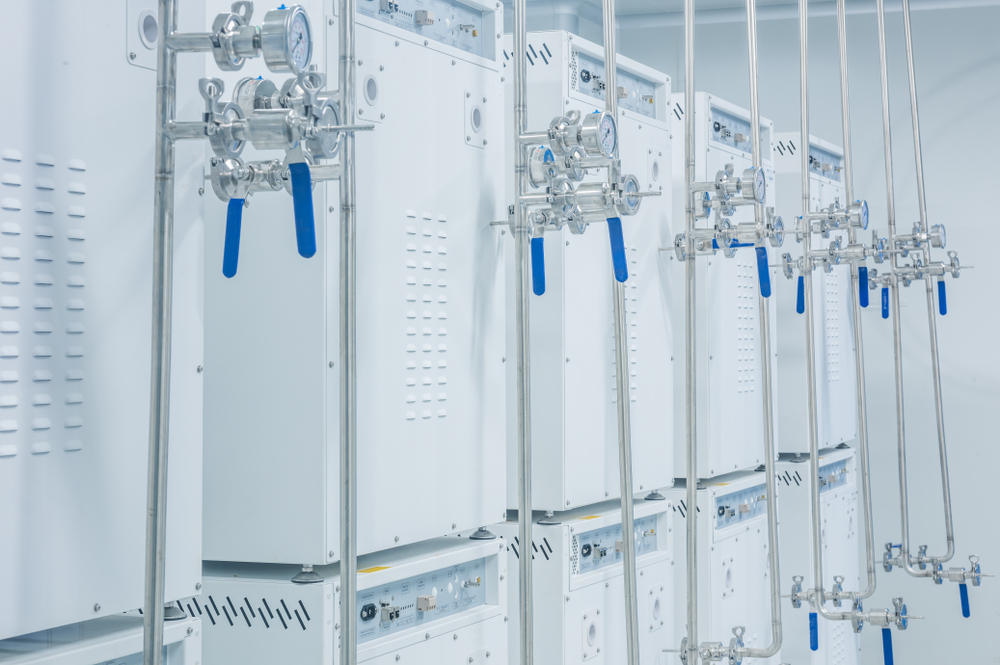
How to Clean Your Lab’s CO2 Incubator
Our previous blog post explained the ways to keep your lab’s incubator in great shape. However, what’s the best way to keep your CO2 incubator clean? Obviously, an incubator’s purpose is to foster an environment ideal for specimen growth. Therefore, it’s critical to keep them sanitary.
In order to properly store and develop tissue cultures, incubators must maintain an exceptional performance. At Cryostar, the certification, calibration and decontamination of CO2 incubators are some of our most in-demand services.
Steps to Cleaning the Incubator
First and foremost, while it might seem like a chore, it’s important to note that cleaning an incubator is important. Basically, it’s not just about preserving hygiene in your work space. Keeping your incubator clean will protect your cells/specimens, and keep your incubator functional. Ultimately, regular cleaning will help to keep your lab cost-efficient. And even if your incubator has an automatic heat decontamination cycle, you should still clean the incubator on a regular basis.
1. Move all your cultures to a separate incubator.
Naturally, your first priority should be to protect your specimens. By transferring your cells to a separate unit, you can take comfort in the knowledge that your work won’t be compromised. However, if you’re confident the cleaning won’t take very long, you can store your cultures in a clean, sanitary plastic container. Next, you’ll have to shut down the incubator. Be sure to cut off the gas supply.
2. Remove all the shelves, supports, and internal components.
Essentially, any removable parts or pieces should be removed from the CO2 incubator. Additionally, be sure to empty the water reservoir. Next, wipe it dry with a clean cloth, ensuring it’s not shedding lint or fibers.
3. Clean all the internal surfaces, ducts, shelves, shelf supports, fan and door gaskets with mild soapy water.
A non-toxic, botanical all-purpose cleaner or a mild dish detergent works very well for this step. It’s very important to access each and every corner of the incubator. Obviously, you want to make sure that any dirt, germs, dust or residue are completely removed. Additionally, if your incubator has coved corners, this should be relatively simple.
4. Rinse all of the interior components and wipe them dry with a clean cloth.
5. Wipe the interior chamber and components with a diluted quaternary ammonium disinfectant.
Once you’ve done this, wipe each area with 70% alcohol to remove any lingering disinfectant. Once again, be sure to reach each and every corner, no matter how obscure. Additionally, make sure you treat the door gaskets. Once you’ve completed this, replace all of the internal parts.
6. Turn the incubator’s heat on and let it dry completely.
This particular step shouldn’t take longer than a few moments. Do not leave the door open as the incubator dries, this could introduce a whole new series of dust and contaminants!
7. If your incubator has an automatic decontamination cycle, now is the time to run it.
Essentially, an incubator’s decontamination cycle is designed to eliminate any bacteria and fungi from the internal chamber. Once this cycle is complete, fill the water reservoir with sterile water. Next, you can reactivate the incubator’s gas supply.
8. Be sure to clean the incubator’s exterior!
This particular step is incredibly important. Basically, any dirt, dust or organisms that find their way onto your incubator’s surface can make their way inside, as well. If the outer surface of your incubator is very dusty, then that dust is getting inside when you open the door. Therefore, it’s just as critical to clean the outside.
To clean the outside of your incubator, use a lint-free cloth lightly dampened in mild, soapy water. Next, wipe it down with a clean cloth lightly dampened in clear water. Once you’ve done this, wipe the incubator down with a dry cloth. Additionally, take special care to clean the door handles and any other surface that everyone in the lab touches. Do not use any liquid cleaners to clean a touch-sensitive surface or display unit. Instead, use a totally dry cloth, preferably microfiber, to clean these.
Congratulations! Your incubator is clean!
Once this process is complete, and your set conditions have been restored, feel free to return your cell cultures to your CO2 incubator.
What If Cleaning Doesn’t Help?
Obviously, if you cleaned your CO2 incubator hoping to fix a troublesome issue and it’s still not working, contact Cryostar right away. As a lab equipment rental and repair service, any one of our expert technicians can assess, diagnose, maintain and repair your CO2 incubator.
| Call for Immediate Lab Services |
|---|
| Long Island, Nassau & Suffolk County Call: 516-333-4006 |
| The Bronx, Manhattan, Brooklyn, Queens, & Staten Island Call: 718-885-0833 |
| Albany & Southern New York State Call: 800-564-5513 |
| Piscataway, Northern & Central New Jersey Call: 800-564-5513 |
| Danbury Connecticut & Surrounding Areas Call: 203-748-7343 |
24/7 Emergency Service |